It was only a matter of time before Palmer amaranth was found on a farm in Ontario. Although technically it was found back in 2007 along a rail line outside of Niagara Falls, surveillance of that area in the years following have never detected any plants since the initial finding. In late summer, an individual plant was found on a farm in Wellington County. The most valuable thing that can be done at this point is to know the process to identify any plants you suspect may be Palmer amaranth and destroy any plants before they produce seed.
Both neighbouring New York (2020) and Michigan States (2010) have found Palmer amaranth. In 2022, Manitoba found it in the rural municipality of Dufferin.
Why is finding Palmer amaranth bad?
The main issue with Palmer amaranth is that resistant populations to 9 different modes of action have been documented (WSSA groups 2,3,4,5,6,9,10,14 and 27). Many populations are multiple resistant, and in 2021 a population that was resistance to 6 different herbicide modes of action (multiple resistant to: WSSA groups 2,5,6,9,14 and 27) was discovered in the United States (Source: https://weedscience.org/Pages/Species.aspx). This significantly limits options to manage this competitive broadleaf weed.
Locations where populations have been found
- Wellington county – at the edge of a corn field.
What made the landowner suspicious?
The landowner referred to “a weird looking pigweed” that just looked different than anything they had seen before. One’s gut instinct is usually a pretty good screening tool for when you should seek help on identifying either Palmer amaranth or waterhemp.
Early detection makes it easier to remove plants
In both cases the amount of plants was small and manageable. Any Palmer amaranth plants could be pulled or dug out to prevent any seed from being produced and dispersed.
What are the key things to look for?
There are 4 key items that lead us to the identification of Palmer amaranth and are highlighted below. This is consistent with what others have experienced. Dr. Lynn Sosnoskie (Cornell University) provides an excellent summary of the key diagnostic features associated with common pigweed species. Leaf tissue from these plants were also sent for DNA analysis to verify the visual identification.
1) Leaf petioles that are longer than the leaf blade
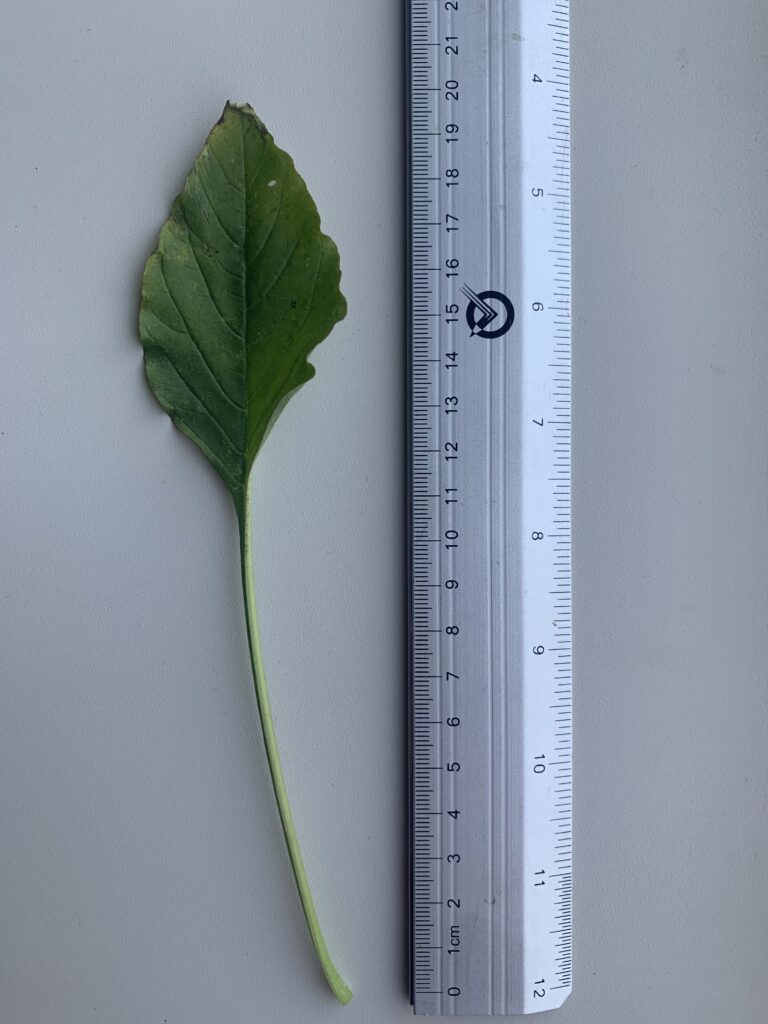

2) Hairless stems
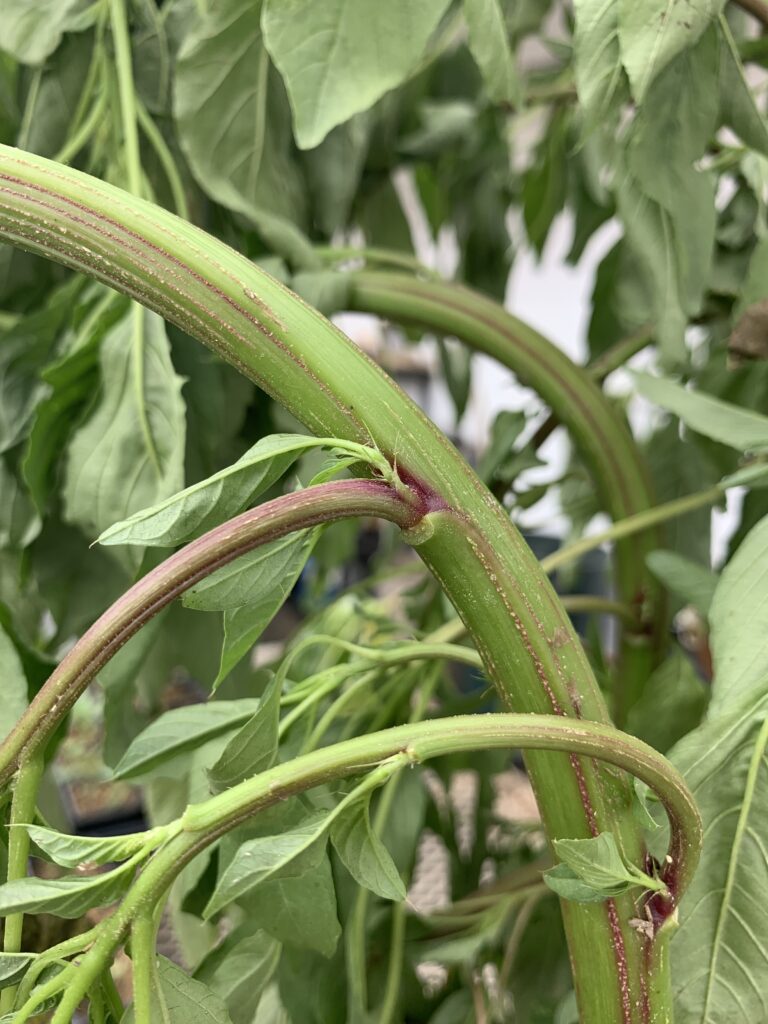
3) Thick and tall stems


4) Diamond shaped leaves
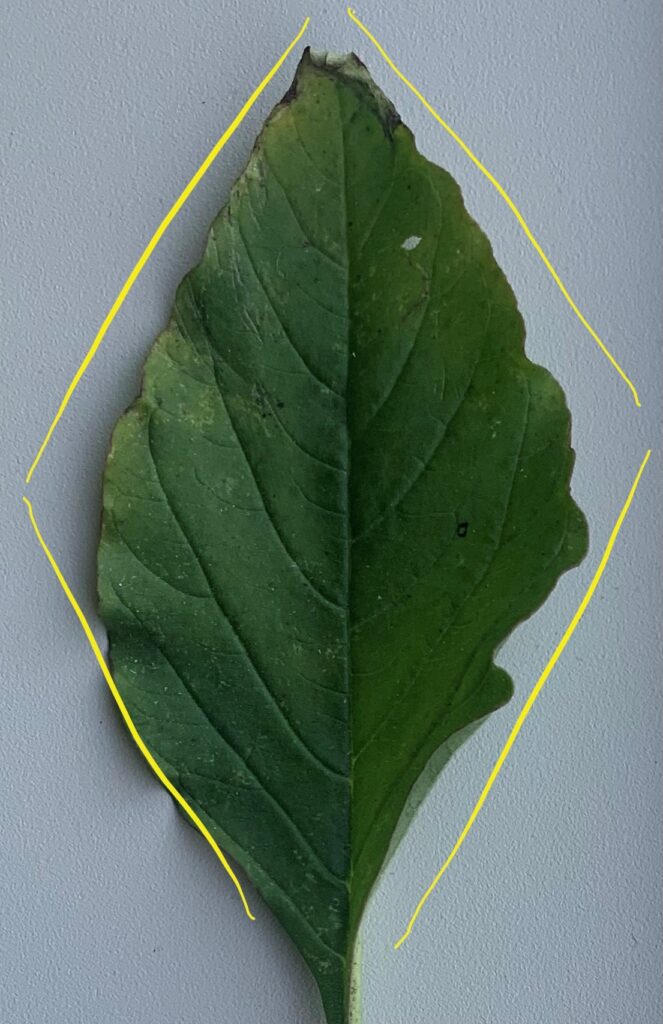
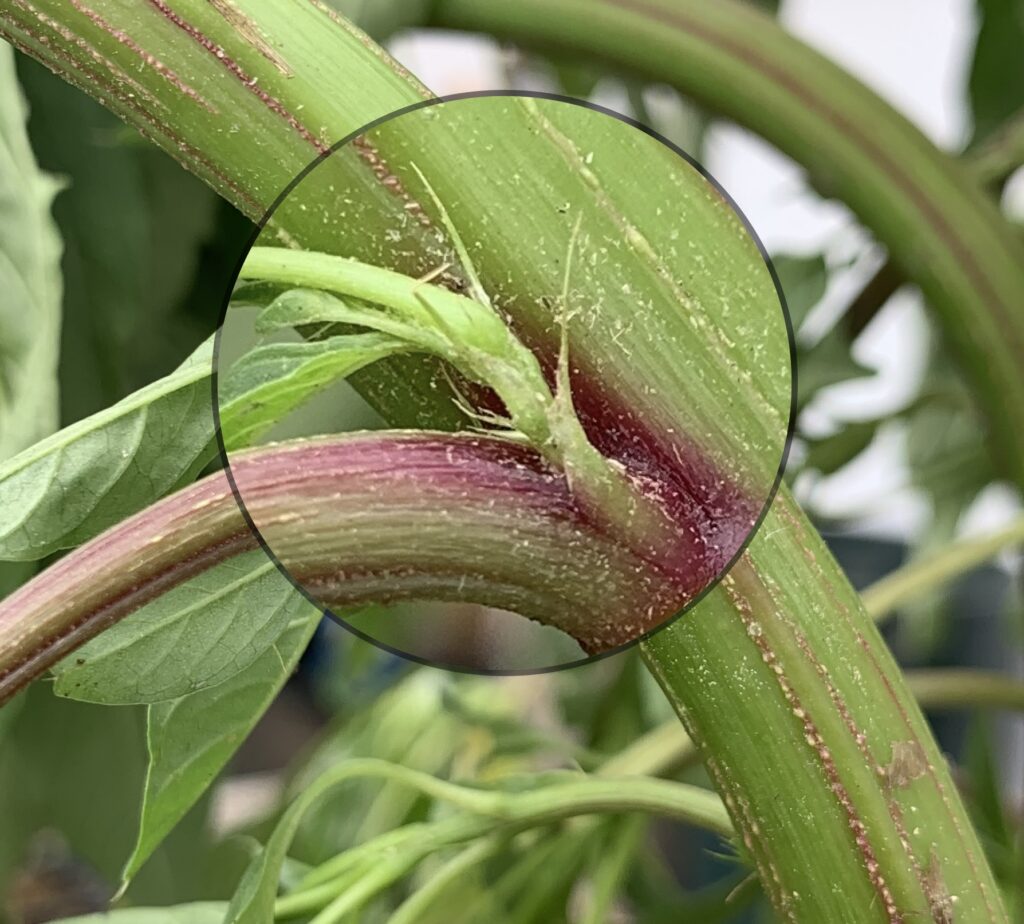
Images from the field

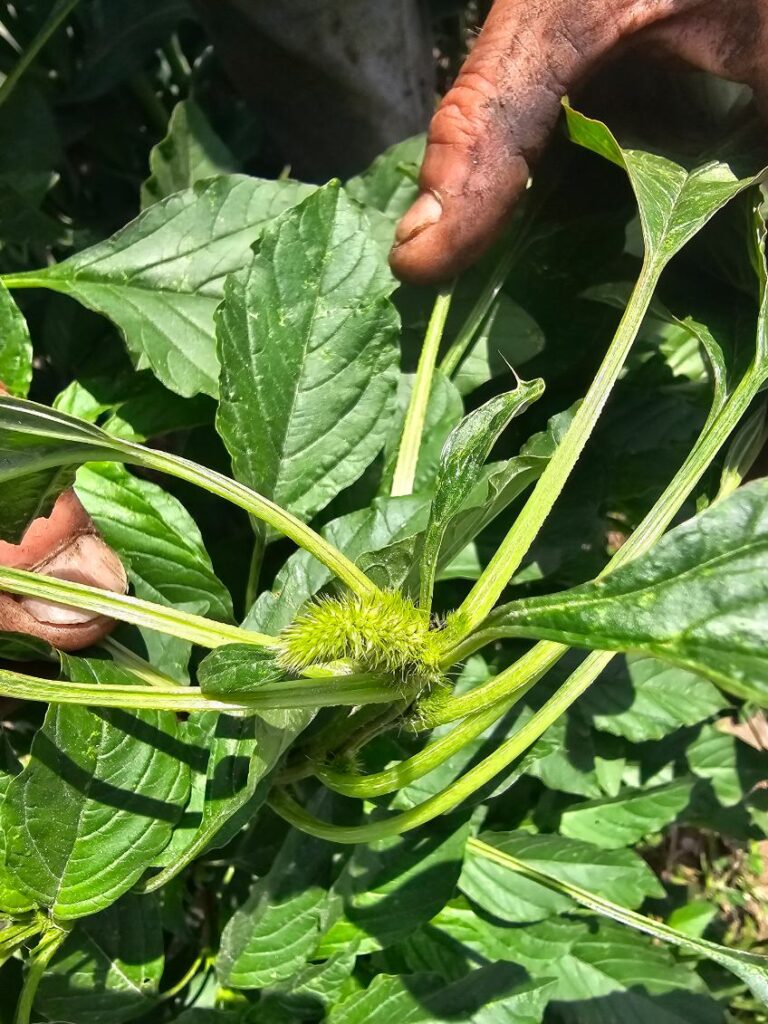
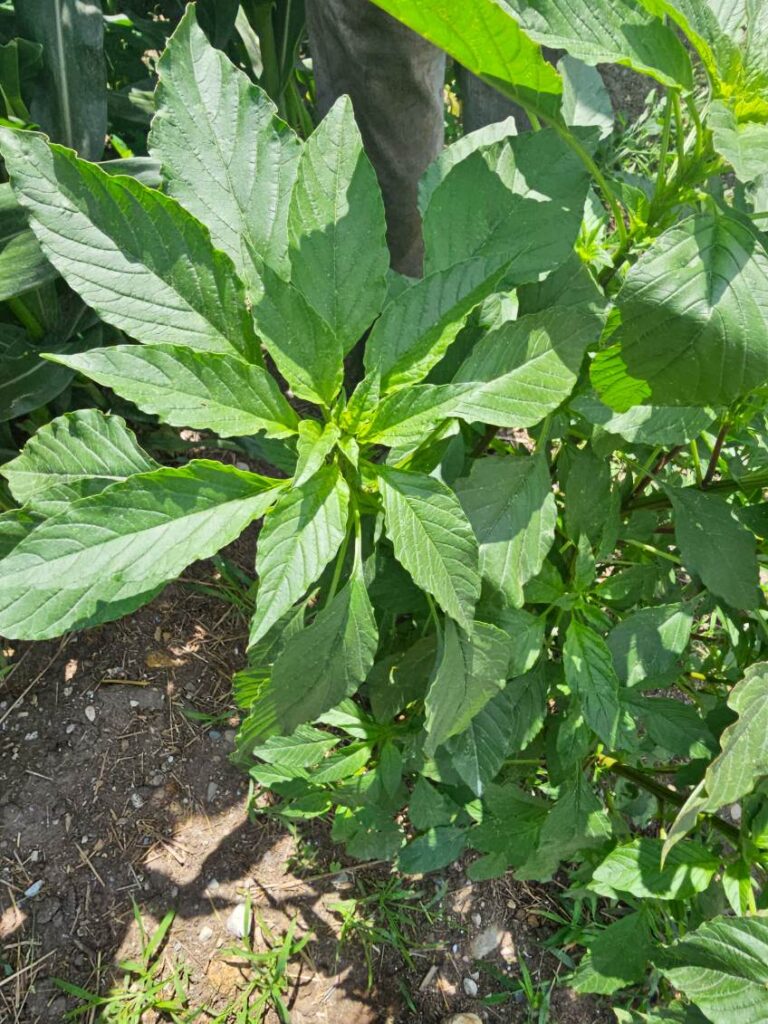
Management options
In general, plants from the amaranth family are often not found in fall planted crops such as winter cereals (wheat, barley, triticale) and winter canola, as they create an environment that is not ideal for seed germination. Perennial forage crops (alfalfa) would provide the best opportunity to prevent germination of new seedlings and depletion of the seed bank through predation and other environmental stressors.
Cover crops planted after crop harvest will general reduce the amount of pigweed species that germinate and are able to produce viable seed.
For corn and soybean, the use of an effective pre-emergence herbicides is extremely important. It removes a significant amount of the first flush of Palmer amaranth seedlings and ensures that there is not a huge range in weed stage at the time of post-emergent applications.
List of current herbicides labelled for the control of palmer amaranth
ID resources
- Ontario Ministry of Agriculture, Food and Rural Affairs
- Michigan State University Weed Science
- Cornell University
- Real Agriculture
2 thoughts on “Palmer amaranth found in Ontario”
Comments are closed.